 |
|||
Jean-Claude Claeys
Der französische Autor und Zeichner wurde am 16. Oktober 1951 in Paris geboren. Seine ersten Comiczeichnungen veröffentlichte Claeys 1974 im Magazin Mormoil. Darin wird der Privatdetektiv Jonathan Foolishbury vorgestellt; ein Charakter, der Jahre später im Album "Whisky´s Dreams" (1977, Editions du Cygne) und "Magnum Song" (1978, Casterman) wieder auftaucht. Foolishbury Abenteuer sind Genretypisch. Korrupte Polizisten, zwielichtige Politiker, schöne Frauen. Die farblosen "Graphic Novels" sind eine Hommage an alte schwarz-weiß Film-Klassiker aus der Nachkriegszeit. Nicht von ungefähr verwendete Claeys in diesen Geschichten diverse Filmanspielungen und sein Held Foolishbury verschleiert sein wahres Gesicht hinter Masken berühmter Filmstars.
Mit Richard D. Nolan zusammen entstand 1987 der Band Lüger et Paix (Luger and Peace), dem 1989 der zweite Band Lame Damnee folgte. Darin wird das Schicksal verschiedener Besitzer einer verfluchten Waffe - der titelgebenden Luger - erzählt. Auf deutsch erschien der erste Teil bei "Schwermetall - Band 23: Luger und Frieden" (Alpha Comic Verlag) und Teil 2 in Band 36. 1995 wurden die beiden Alben zusammengefasst und unter dem Titel "Lame fatale" herausgegeben. Claeys stattete diese, heute meist vergriffene Ausgabe mit 30 zusätzlichen Seiten aus, die hauptsachlich erotischer Natur und ziemlich freizügig waren. Der Verlag Soleil Production veröffentlichte zudem im gleichen Jahr eine erweiterte Version von "Magnum Song".
Claeys ist im eigentlichen Sinne eher ein begnadeter Illustrator als ein reiner Comickünstler. Dies zeigen eindrucksvoll nicht nur die unzähligen Buchcover, die Claeys angefertigt hat. Für NéO zeichnete er zwischen 1979 und 1989 allein 154 Covers für die Polizei-Roman-Reihe "Le Miroir Obscur". Weitere Titel, die Claeys bediente waren "James Hadley: Chase", "Le Cherche Midi", "Spéciale Police", "Alfred Hitchcock démasque", "Hitchcock présente" oder "La Petite Vermillon". Auch die Werbung interessierte sich für Claeys Arbeiten. Es entstanden Anzeigenmotive, aber auch Kino- oder Veranstaltungsplakate.
1984 veröffentlichte Claeys bei Albin Michel mit Autor R.D. Nolane das Comic-Album "La Meilleure Façon de tuer son prochain" und 1984 "L Été noir" (der schwarze Sommer). Bei Humanoïdes Associés erschien 1988 die Comicgeschichte "La Lune dans le caniveau".
Die Limitierung der 1970er/1980er Jahre, bei Produktionen meist ohne Farbe auszukommen (weil billiger im Druck), kontert Claeys in hyperrealistischen Zeichnungen, die an schwarz-weiß Fotos erinnern und bevorzugt den Charme und die Stimmung alter Filmproduktionen einfängt. In seinen Comics und Illustrationen konnte er natürlich etwas gewagter und freizügiger agieren, als es die Filmemacher der Nachkriegsjahre je durften. Das verleiht den Bildern einen - fast möchte man sagen - authentischeren Touch. Einerseits bedient sich Claeys den Stilmitteln der "Noir"-Filme. Andererseits konnte er in den 1980er Jahren - gut 20 Jahre später - freizügiger in seinen Interpretationen sein. Obwohl Themen wie Sex, Gewalt und Erotik in den 1940er und 1950er Jahren in den Medien nur ansatzweise zur Sprache kamen, sah die Wirklichkeit sicherlich anders aus. Gerade der bildschwere Overkill der heutigen Zeit in Sachen Sex und Erotik, lassen die zeitlos-modernen Bilder von Claeys so interessant erscheinen.
Seine Kunst erinnern oftmals an Foto-Collagen, die mit einem HDR-Filter bearbeitet wurden. Der Vergleich kommt nicht von ungefähr. Claeys arbeitet mit Hilfe von Fotos und Modells um Licht- und Schattenverhältnisse korrekt wiedergeben zu können. Dabei vertraut er meist nur eigenen Fotografien und bevorzugt ausgesuchte Modelle.
Der Ablauf in der Entstehung einer Illustration oder Zeichnung ist jedoch eigentlich sehr klassisch. Zuerst werden Skizzen angefertigt, die später als Vorlage für das Modell dienen oder bei der Bildrecherche für Hintergründe oder andere Bildelemente helfen. Aus den gemachten Fotos entstehen danach mit Pinsel, Farbe und Tusche die ausgearbeiteten Zeichnungen. Der Pinsel ist Claeys bevorzugtes Arbeitsgerät. Grauabstufungen werden meist mit einem zarten Tuscheauftrag auf das Papier erzeugt. In seinen ersten Comicarbeiten verwendete Claeys auch noch Rapidographen (Rotring). Damit erzeugte er mit einer klassischen Punktiertechnik eindrucksvolle Schattierungen und Strukturen.
Trotz der thematischen Film Noir-Ausrichtung seiner Illustrationen oder Comic, ist Claeys recht modern geblieben. Das betrifft nicht nur seine Kunst, seine Motive und Inhalte, die nicht nur farbiger, sondern auch zeitgemäßer geworden sind; ohne jedoch die ein oder andere Hommage vermissen zu lassen. Aktuelle Projekte und Ansichten werden zeitgemäß mittels Internet, via Facebook kommuniziert.
Claeys hat im Vergleich recht wenig erotisches Comicmaterial gestaltet, was im Grunde recht Schade ist. Doch seine Qualität als Zeichner und Illustrator, seine Liebe zur weiblichen Form und Ausstrahlung, sowie der interessanten Ausrichtung seiner Bilder, machen Claeys Kunst so einzigartig und faszinierend. Weitere Einblicke und Details über Claeys Arbeit, Vorbilder und Gedanken, sowie ein umfangreiches Text- und Bildarchiv, liefert seine recht übersichtliche und informative Webseite; wenn auch nur in französischer Sprache.
Veröffentlichungen/Publications (Auswahl/Selection): - Whisky´s dreams (1977) - Magnum Song (1979-1980/1981) - Paris-Fripon Portfolio (1982/1988) - Paris-Fripon (mit Albin Michel 1981 bzw. 1984/Neuauflage) - La Meilleure façon de tuer son prochain (mit Albin Michel, 1982) - L'Été noir (mit Albin Michel, 1984) - La Une dans le caniveau (1988) - Lüger et Paix 1 und 2 (1987/1989 und "Lame fatale", 1995, Neuauflage)
- Sweet rococo (Emmanuelle Nr. 5, 1975) - East side story (A suivre Nr. 6/7-8, 1978) - Bleu champagne (Virus, Nr. 1-5, 1980-1981) - L'Exterminateur (1981) - BD d’été n° 15 (Libération Nr. 71, 1981)
Links: - französischer Wikipediaeintrag - Facebook Account |
This translation is unedited!
Jean-Claude Claeys
The French author and artist was born on 16 October 1951 in Paris. Claeys published his first comic drawings in 1974 in the magazine Mormoil. It introduces the private detective Jonathan Foolishbury, a character who reappears years later in the album "Whisky?s Dreams" (1977, Editions du Cygne) and "Magnum Song" (1978, Casterman). Foolishbury adventures are genre-typical. Corrupt cops, shady politicians, beautiful women. The colorless "Graphic Novels" are a homage to old black and white film classics from the post-war period. It's no coincidence that Claeys used various film references in these stories, and his hero Foolishbury obscures his true face behind masks of famous film stars.
Together with Richard D. Nolan, the band Lüger et Paix (Luger and Peace) was formed in 1987, followed by the second band Lame Damnee in 1989. It tells the story of the fate of various owners of a cursed weapon - the Luger who gave it its title. In German, the first part was published by "Schwermetall - Band 23: Luger und Frieden" (Alpha Comic Verlag) and part 2 in volume 36. In 1995 the two albums were combined and published under the title "Lame fatale". Claeys equipped this, today mostly out of print edition with 30 additional pages, which were mainly erotic in nature and quite permissive. The publisher Soleil Production also published an extended version of "Magnum Song"in the same year.
Claeys is in the true sense of the word a gifted illustrator rather than a pure comic artist. This is impressively demonstrated not only by the innumerable book covers Claeys has made. Between 1979 and 1989, he drew 154 covers for NéO's "Le Miroir Obscur"series of police novels. Other titles Claeys used were "James Hadley: Chase", "Le Cherche Midi", "Spéciale Police", "Alfred Hitchcock démasque", "Hitchcock présente"or "La Petite Vermillon". The advertising was also interested in Claey's work. Advertising motifs were created, as well as cinema or event posters.
In 1984 Claeys published by Albin Michel with author R. D. Nolane's comic book album "La Meilleure Façon de tuer son prochain" and 1984 "L Été noir" (Black Summer). Humanoïdes Associés published the comic strip story "La Lune dans le caniveau"in 1988.
The limitation of the 1970s/1980s, that in productions mostly without colour (because it is cheaper to print), is countered by Claeys in hyper-realistic drawings, which are reminiscent of black and white photos and capture the charm and atmosphere of old film productions. In his comics and illustrations, he could of course act a little more daringly and freely than the filmmakers of the post-war years were ever allowed to do. This gives the pictures a more authentic touch - one might almost say that. On the one hand, Claeys uses the stylistic devices of the "Noir"films. On the other hand, in the 1980s - a good 20 years later - he was able to be more liberal in his interpretations. Although topics such as sex, violence and eroticism were only rudimentary topics in the media in the 1940s and 1950s, the reality was certainly different. Especially the heavy overkill of today's sex and eroticism make the timelessly modern pictures of Claeys seem so interesting.
His art is often reminiscent of photo collages that have been processed with an HDR filter. The comparison is no accident. Claeys works with the help of photos and models to reproduce light and shadow conditions correctly. In most cases, he only trusts his own photographs and prefers selected models.
The process of creating an illustration or drawing is, however, actually very classical. First of all, sketches are made which later serve as a template for the model or help with the picture search for backgrounds or other picture elements. The finished drawings are then created from the photos with brush, paint and ink. The brush is Claey's favorite tool. Gray gradations are usually created with a delicate ink application on the paper. In his first comic works Claeys also used Rapidographers (Rotring). Using a classic dotting technique, he created impressive shades and structures.
Despite the thematic film noir orientation of his illustrations or comic, Claeys has remained quite modern. This applies not only to his art, his motifs and contents, which have become not only more colourful, but also more contemporary; without, however, forgetting to miss one or two homage. Current projects and views are communicated in a contemporary way via the Internet and Facebook.
Claeys has created very little erotic comic material in comparison, which is basically a pity. But his quality as a artist and illustrator, his love for the feminine form and charisma, as well as the interesting orientation of his pictures, make Claey's art so unique and fascinating. Further insights and details about Claey's work, models and thoughts, as well as an extensive text and image archive, can be found on his quite clear and informative website, even if only in French. |
||||||||
 |
|||||||||
 |
|||||||||
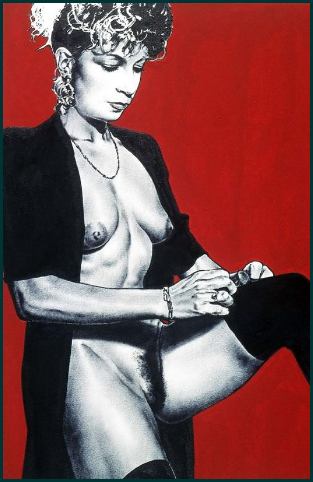 |
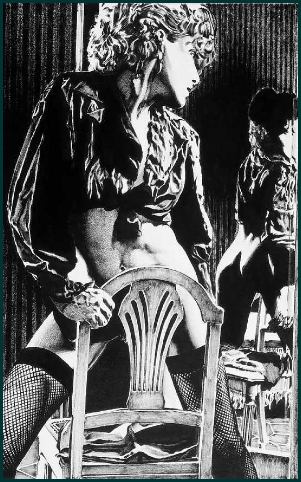 |
|||
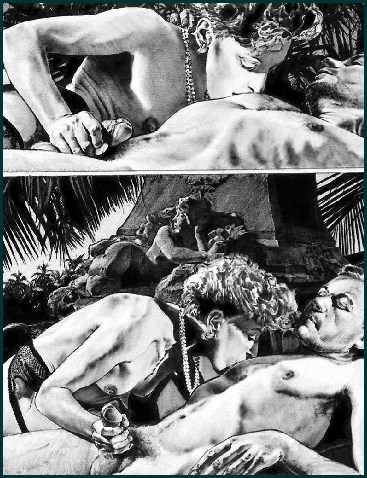 |
||||
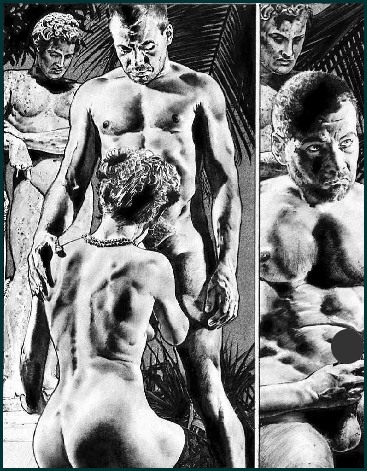 |
||||
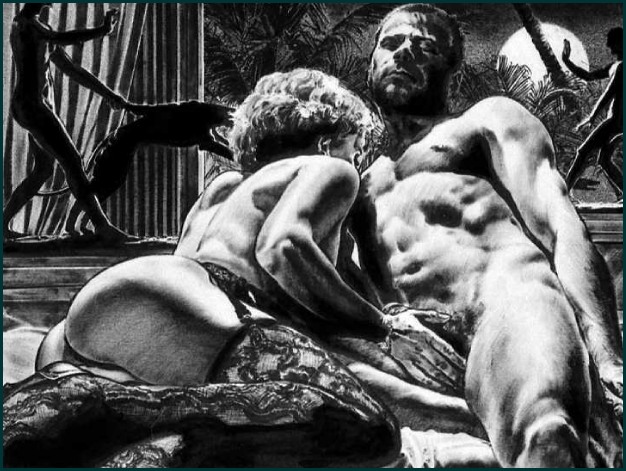 |
||
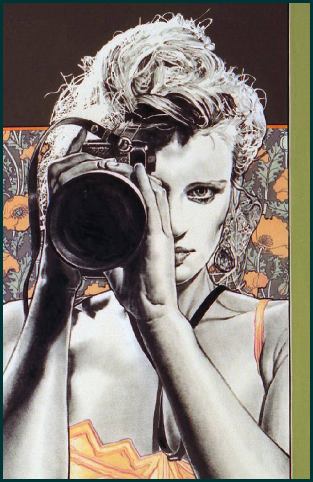 |
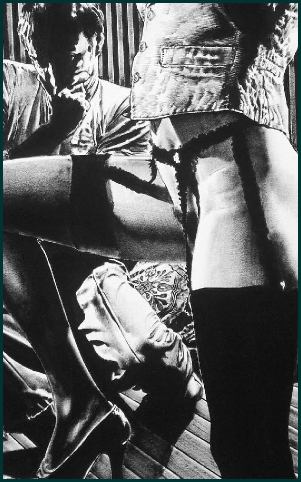 |
|||
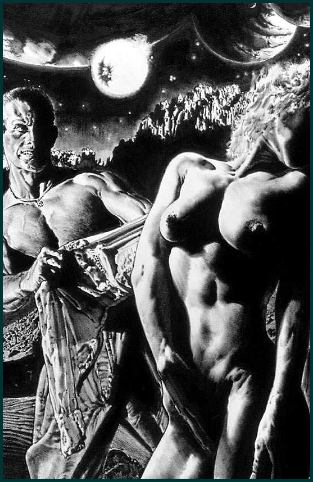 |
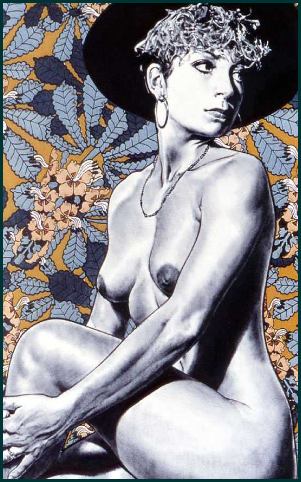 |
|||
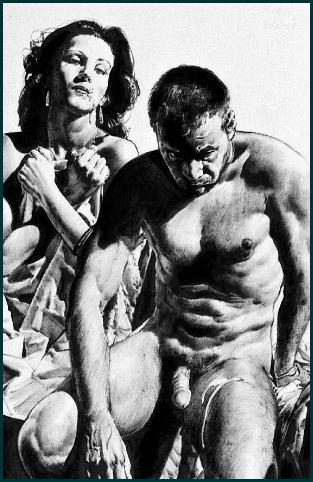 |
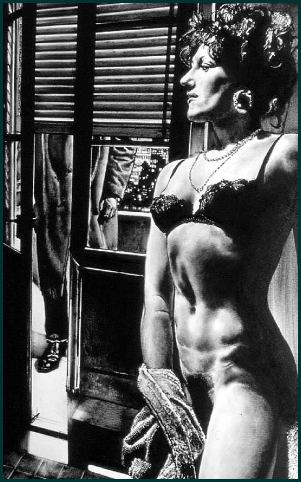 |
|||